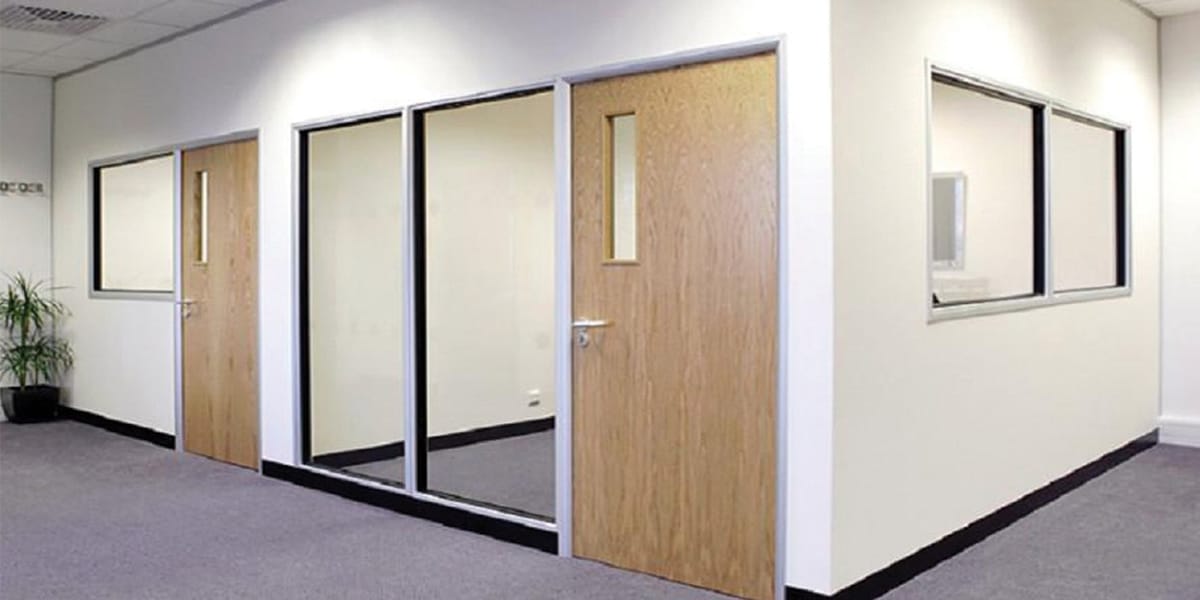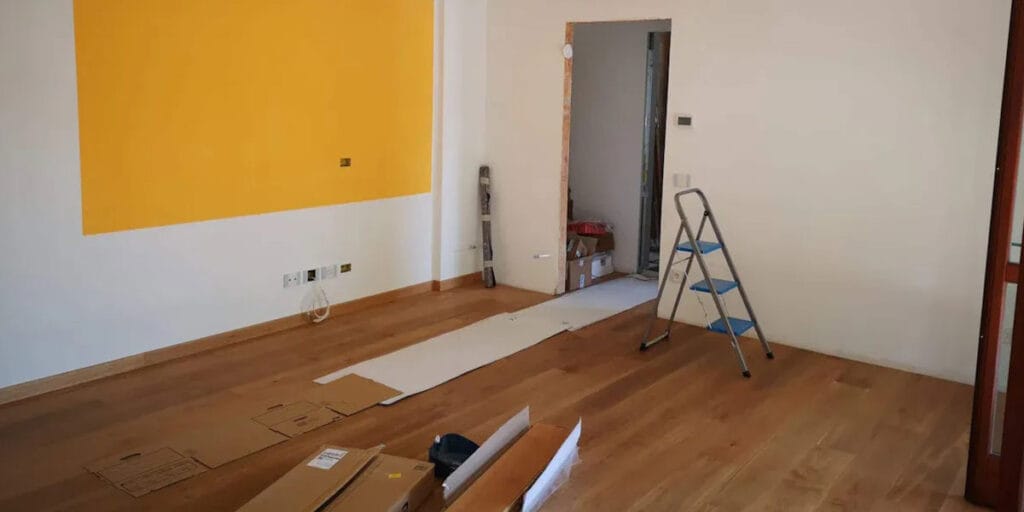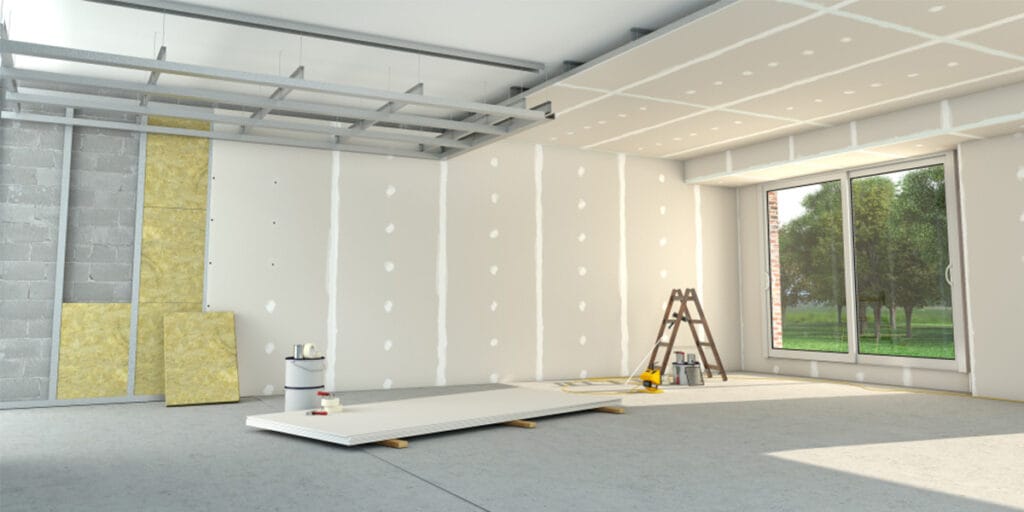
26 Apr What Is Mold-Resistant Drywall and Why You Need It
Table of Contents
Mold resistant drywall is specifically designed to prevent mold growth. It is constructed with materials that do not absorb water, making it ideal for wet or damp areas. This type of drywall helps maintain clean air and protects your home. Consider using mold resistant drywall in bathrooms, basements, or kitchens to create a safer living environment.
Key Takeaways
Mold-resistant drywall stops mold by using water-resistant materials. It works well in wet places like bathrooms and kitchens.
This drywall helps air stay clean by lowering mold spores. It makes your home safer and healthier for your family.
It costs more than normal drywall but saves money later. It prevents mold damage and cuts down on repair costs.
What Is Mold-Resistant Drywall?
How Mold-Resistant Drywall Works
Mold-resistant drywall is made to stop mold in damp places. Unlike regular drywall, it uses special materials like fiberglass or treated paper. These materials do not soak up water, stopping mold from growing. This makes it great for bathrooms, basements, and laundry rooms. By keeping mold away, it protects your home and keeps the air cleaner.
Types of Mold-Resistant Drywall
There are different kinds of mold-resistant drywall for various needs. Most have a gypsum center with fiberglass or a wax coating. Fiberglass drywall is fully non-organic and blocks mold well. Wax-coated drywall, called “green board,” resists water but not mold as much. Brands like Mold Tough, Gold Bond XP, and ToughRock are strong and resist mold, making them good for wet areas.
What Is MGO Board?
MGO board, or magnesium oxide board, is a strong mold-resistant drywall. It is made from minerals that do not hold water, so mold cannot grow. Its high alkalinity also stops mold and mildew. MGO board is fireproof and lasts a long time, even in wet places like kitchens and bathrooms. It is better at resisting water and damage than regular fiberboard, making it a smart choice for your home.
Benefits of Mold-Resistant Drywall
Stops Moisture and Mold
Mold-resistant drywall is made to stop mold in wet places. It has a gypsum center and a cover like fiberglass or wax paper. These materials block water, so mold cannot grow or spread. This makes it perfect for bathrooms, kitchens, and laundry rooms with high humidity.
These panels handle both wet and dry conditions well. Using this drywall protects your home from mold damage and keeps it cleaner. It also helps avoid expensive repairs caused by water problems.
Cleaner Air Indoors
Mold-resistant drywall helps keep the air inside your home clean. Mold and mildew release tiny spores that can make you sick. These spores can cause allergies or breathing issues. Using mold-resistant drywall lowers the number of harmful spores in the air.
This drywall also reduces air pollution from chemicals and mold. It creates a healthier and more comfortable home for your family. Choosing these materials keeps your house safe and pleasant to live in.
Strong and Long-Lasting
Mold-resistant drywall is tough and lasts a long time. It resists water, mold, and mildew better than regular drywall. This means fewer repairs or replacements, saving you money over time.
Its strength makes it great for homes and businesses. Whether fixing up your house or building something new, this drywall is a smart choice. It adds value and keeps your property strong for years.
Where Should You Use Mold-Resistant Drywall?

Bathrooms and Kitchens
Bathrooms and kitchens often have a lot of moisture. Mold-resistant drywall is perfect here because it stops mold. Its special materials block water, making it great near sinks or counters. But don’t use it in places with direct water, like showers. Mold can still grow in hidden spots if water gets trapped.
Experts suggest using this drywall behind sinks or on lower walls in bathrooms. This helps protect your home from water damage and costly repairs. Mold-resistant drywall is strong and lasts a long time, even in wet areas.
Type of Drywall | Description |
|---|---|
Gypsum core and fiberglass facing | Blocks water and mold, good for kitchens and bathrooms. |
Mold-resistant panels | Handles high moisture, great for wet spaces. |
Moisture-resistant drywall | Stays strong in humid areas, lasts longer. |
Basements and Laundry Rooms
Basements and laundry rooms are often damp with little airflow. This makes them perfect for mold to grow. Mold-resistant drywall lowers mold spores in the air, keeping it healthier to breathe. It also stops dust mites, improving air quality even more.
Using this drywall in these rooms helps stop mold and protects your home. Experts recommend placing it on lower walls or behind washers and dryers. While it won’t stop all mold, it greatly reduces the chances of it forming.
Makes air cleaner by cutting mold spores.
Keeps walls safe from water damage.
Stays strong in damp areas.
Commercial and Industrial Applications
Mold-resistant drywall is also great for businesses and factories. These places often deal with heavy use and lots of moisture, like in kitchens or hospitals. Fiberglass drywall is strong and blocks water well, keeping buildings safe.
This drywall also helps improve air quality, which is important in crowded places. Schools and offices benefit from fewer mold problems and cleaner air. Plus, it lasts a long time, even in tough conditions.
Handles heavy use and wear.
Stops mold and water damage.
Improves air in busy spaces.
Mold-Resistant Drywall vs. Traditional Drywall

Key Differences in Performance
Mold-resistant drywall works better in wet or damp places. It has a gypsum center and fiberglass layer that block mold. Regular drywall uses paper, which mold can grow on easily.
Mold-resistant drywall stops mold by removing its food source. Fiberglass replaces paper, creating a shield against mold.
Regular drywall fails in humid areas, but mold-resistant drywall does well. This makes it ideal for bathrooms, basements, and laundry rooms.
Feature | Mold-Resistant Drywall | Traditional Drywall |
|---|---|---|
Composition | Paper layer | |
Mold Prevention Guarantee | Resists mold, not fully | No mold resistance |
Moisture Resistance | Yes | Limited |
Cost and Value Comparison
Mold-resistant drywall costs more, about $12 per sheet. Regular drywall is cheaper, costing around $9 per sheet. But mold-resistant drywall saves money over time. It lowers the chance of mold damage and costly repairs.
Using it in wet areas like bathrooms protects your home better. While it costs more upfront, it lasts longer and avoids frequent fixes. This makes it worth the extra cost for damp spaces.
Potential Drawbacks of Mold-Resistant Drywall
Mold-resistant drywall has some downsides. It costs more than regular drywall, which may not suit all budgets. Also, it cannot stop all mold. Mold can still grow if water gets trapped behind it.
Knowing the pros and cons helps you choose wisely. Mold-resistant drywall is great for moisture, but it’s not perfect. Think about your needs and budget before deciding.
Mold-resistant drywall keeps mold and moisture away effectively. Its strong build helps improve air and lowers mold risks. Use it in damp places like bathrooms or basements to protect your home. It’s simple to install and saves money over time, making it a wise choice for any space.
FAQ
How is mold-resistant drywall different from regular drywall?
Mold-resistant drywall uses fiberglass or special materials, not paper. This helps stop mold and works well in damp areas.
Can mold-resistant drywall stop all mold?
It lowers mold risks but doesn’t stop it completely. Mold can grow if water gets stuck behind the drywall. Install it correctly and keep the area ventilated.
Is mold-resistant drywall worth the higher price?
Yes, it saves money by avoiding mold damage later. It also makes air cleaner and keeps your home safer, so it’s a smart choice.
